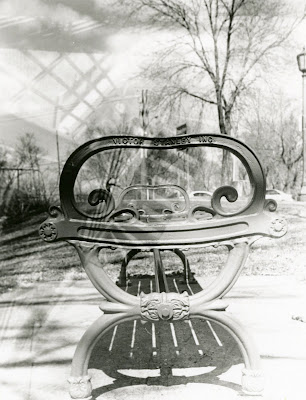Memories, like photographs help us save our pasts for the future. But unlike photographs, memories are not packed into four defined edges of a picture frame. Fluid as clouds, memories float about in our mindscapes.
Searching for memories can be an elusive and disorienting task. The stairs we climb to ascend up the clouds of memory might, instead, lead us down. Entrapped in the soft, hazy texture of memories from our distant pasts, the cloud of illusiveness erodes the depth of perception for vivid remembrance.
But all we need to conjure is a trace, an outline, a clue, to start the synthesis of memories. Take that clue by hand and pull it out to distill the picture. As this memory becomes clearer and more definite, we will start seeing the fine details within that frame of memory: (in this case), the cold, hard feet of the bench that lend strength in its defiance against gravity, the delicate curvatures of the bench’s metallic hand that contradicts its apparent durability. Although clarity develops, the hazy shadows of uncertain steps stay watermarked in the backdrop, inhibiting a sharp focus on the details we try to remember.
 Searching
Searching --------------------------------------
Parallel to photography, the synthesis of memories is extremely time sensitive. But unlike developing a photograph (where longer exposure composes a darker picture), fragile memories dissolve with time. Therefore, we need to allow just the appropriate amount of time for memories to be crystallized after the haze has cleared.
 Synthesis
Synthesis--------------------------
Once this stage is done, details from memories become more organized; and within that frame emerges exquisite textures: the balance of nature and how light that illuminates the bench uses its power to create dense, empty spaces of the shadows. Notice these empty shadows’ disguise. As if they were a part of the bench’s bottom, the shadows flow into the very objects that sheltered light from them. Like these dark empty shadows blending onto reality effortlessly, the thin film between framed and floating memory is hard to develop.

Emerging
